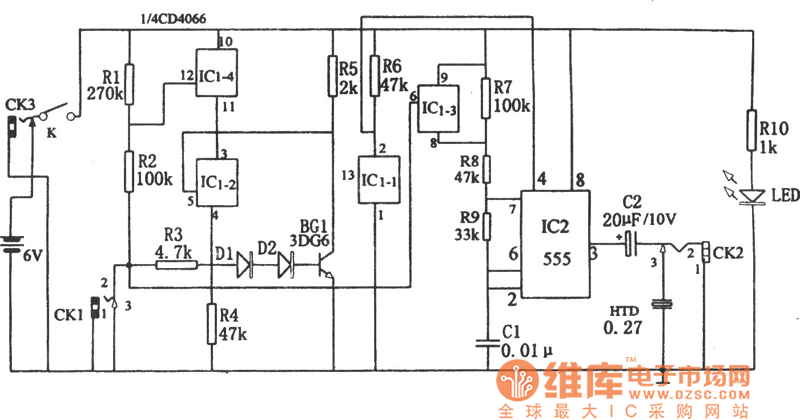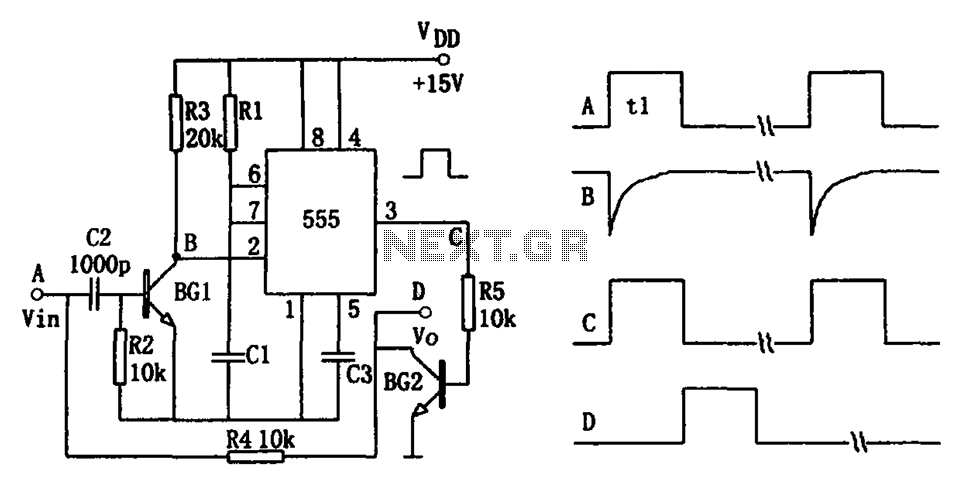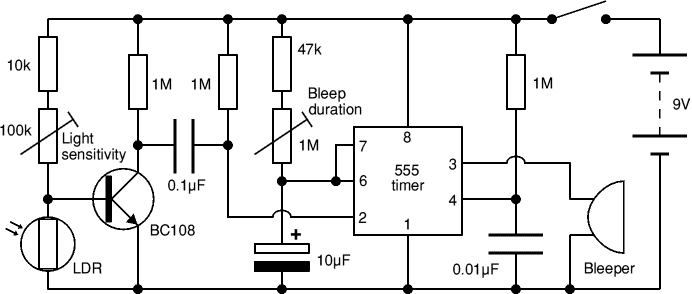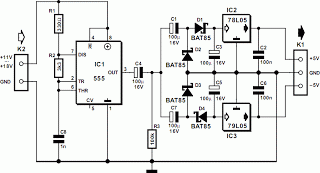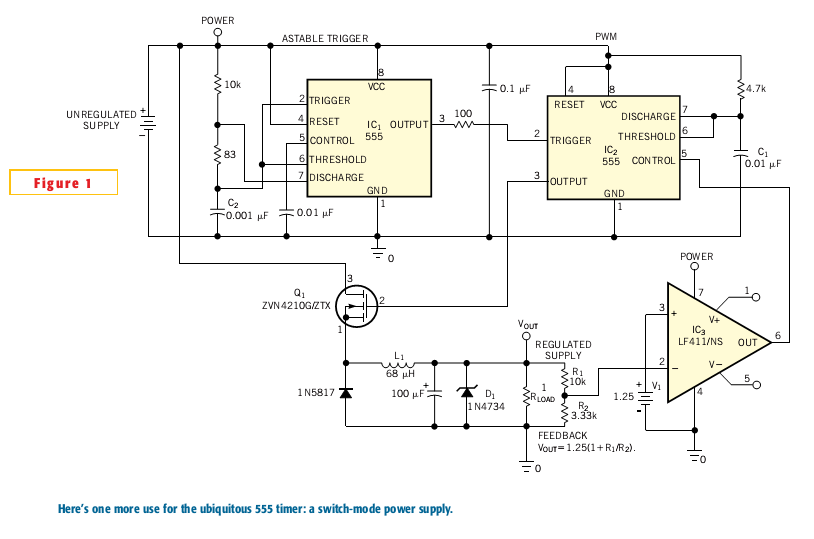
555 IC For Basic Monostable Multivibrator
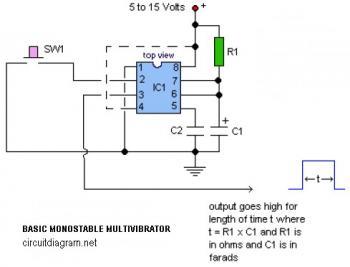
The following circuit illustrates a basic monostable multivibrator, which is based on the 555 Timer IC. Key features include pin 4 functioning as the RESET pin, with the time period defined by the equation t = R1 x C1.
The basic monostable multivibrator circuit using the 555 Timer IC operates by producing a single output pulse in response to a triggering input. When the trigger pin (pin 2) receives a negative pulse, the output (pin 3) goes high for a duration determined by the resistor (R1) and capacitor (C1) values. The time period of the output pulse can be calculated using the formula t = 1.1 x R1 x C1, where t is the pulse width in seconds, R1 is in ohms, and C1 is in farads.
In this configuration, pin 4 serves as the RESET pin, allowing the circuit to be reset and the output pulse to be terminated prematurely if needed. The 555 Timer can be powered by a standard DC supply, typically between 5V and 15V, depending on the specific requirements of the application.
The circuit typically includes a diode connected in parallel with the timing capacitor to discharge it quickly when the output goes low, ensuring reliable operation. The design can be adapted for various applications, such as timers, pulse generators, or frequency dividers, by adjusting the values of R1 and C1.
In practical applications, it is essential to consider the tolerance of the resistor and capacitor, as variations can significantly affect the timing accuracy. Additionally, bypass capacitors may be included near the power supply pins to filter out noise and ensure stable operation of the 555 Timer IC.Description:The following circuit shows about Basic Monostable Multivibrator. This circuit based on the 555 Timer IC. Features: Pin 4 is the RESET, t=R1xC1, .. 🔗 External reference
The basic monostable multivibrator circuit using the 555 Timer IC operates by producing a single output pulse in response to a triggering input. When the trigger pin (pin 2) receives a negative pulse, the output (pin 3) goes high for a duration determined by the resistor (R1) and capacitor (C1) values. The time period of the output pulse can be calculated using the formula t = 1.1 x R1 x C1, where t is the pulse width in seconds, R1 is in ohms, and C1 is in farads.
In this configuration, pin 4 serves as the RESET pin, allowing the circuit to be reset and the output pulse to be terminated prematurely if needed. The 555 Timer can be powered by a standard DC supply, typically between 5V and 15V, depending on the specific requirements of the application.
The circuit typically includes a diode connected in parallel with the timing capacitor to discharge it quickly when the output goes low, ensuring reliable operation. The design can be adapted for various applications, such as timers, pulse generators, or frequency dividers, by adjusting the values of R1 and C1.
In practical applications, it is essential to consider the tolerance of the resistor and capacitor, as variations can significantly affect the timing accuracy. Additionally, bypass capacitors may be included near the power supply pins to filter out noise and ensure stable operation of the 555 Timer IC.Description:The following circuit shows about Basic Monostable Multivibrator. This circuit based on the 555 Timer IC. Features: Pin 4 is the RESET, t=R1xC1, .. 🔗 External reference
Warning: include(partials/cookie-banner.php): Failed to open stream: Permission denied in /var/www/html/nextgr/view-circuit.php on line 713
Warning: include(): Failed opening 'partials/cookie-banner.php' for inclusion (include_path='.:/usr/share/php') in /var/www/html/nextgr/view-circuit.php on line 713
